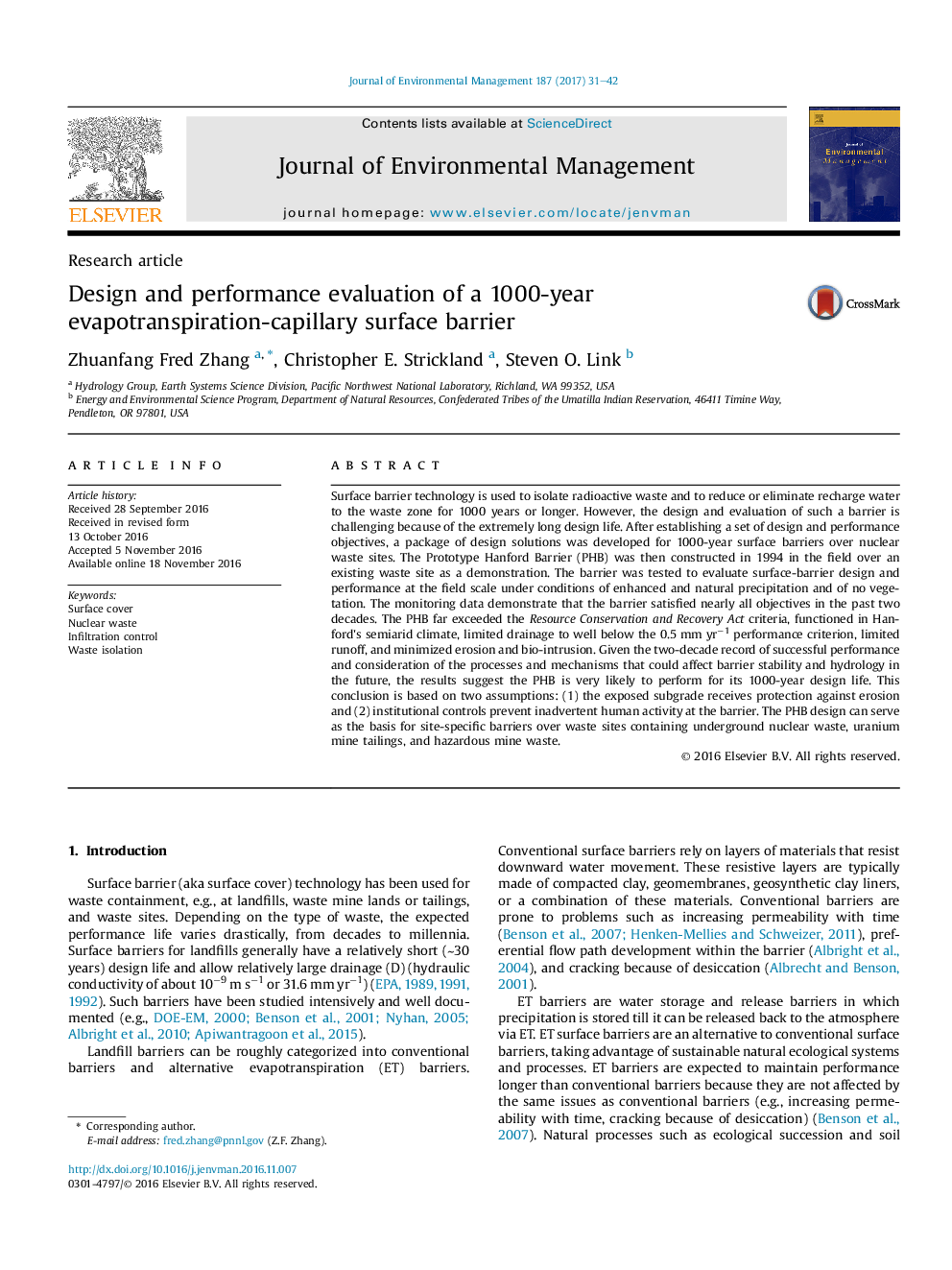| Article ID | Journal | Published Year | Pages | File Type |
|---|---|---|---|---|
| 5117352 | Journal of Environmental Management | 2017 | 12 Pages |
•Design and performance objectives were established for 1000-year surface barriers.•A package of design solutions was developed based on these objectives.•A barrier was constructed and demonstrated over a waste site for two decades.•Monitoring data indicate that the barrier satisfied nearly all key objectives.•The barrier design can serve as the basis for barriers over other waste sites.
Surface barrier technology is used to isolate radioactive waste and to reduce or eliminate recharge water to the waste zone for 1000 years or longer. However, the design and evaluation of such a barrier is challenging because of the extremely long design life. After establishing a set of design and performance objectives, a package of design solutions was developed for 1000-year surface barriers over nuclear waste sites. The Prototype Hanford Barrier (PHB) was then constructed in 1994 in the field over an existing waste site as a demonstration. The barrier was tested to evaluate surface-barrier design and performance at the field scale under conditions of enhanced and natural precipitation and of no vegetation. The monitoring data demonstrate that the barrier satisfied nearly all objectives in the past two decades. The PHB far exceeded the Resource Conservation and Recovery Act criteria, functioned in Hanford's semiarid climate, limited drainage to well below the 0.5 mm yr−1 performance criterion, limited runoff, and minimized erosion and bio-intrusion. Given the two-decade record of successful performance and consideration of the processes and mechanisms that could affect barrier stability and hydrology in the future, the results suggest the PHB is very likely to perform for its 1000-year design life. This conclusion is based on two assumptions: (1) the exposed subgrade receives protection against erosion and (2) institutional controls prevent inadvertent human activity at the barrier. The PHB design can serve as the basis for site-specific barriers over waste sites containing underground nuclear waste, uranium mine tailings, and hazardous mine waste.
